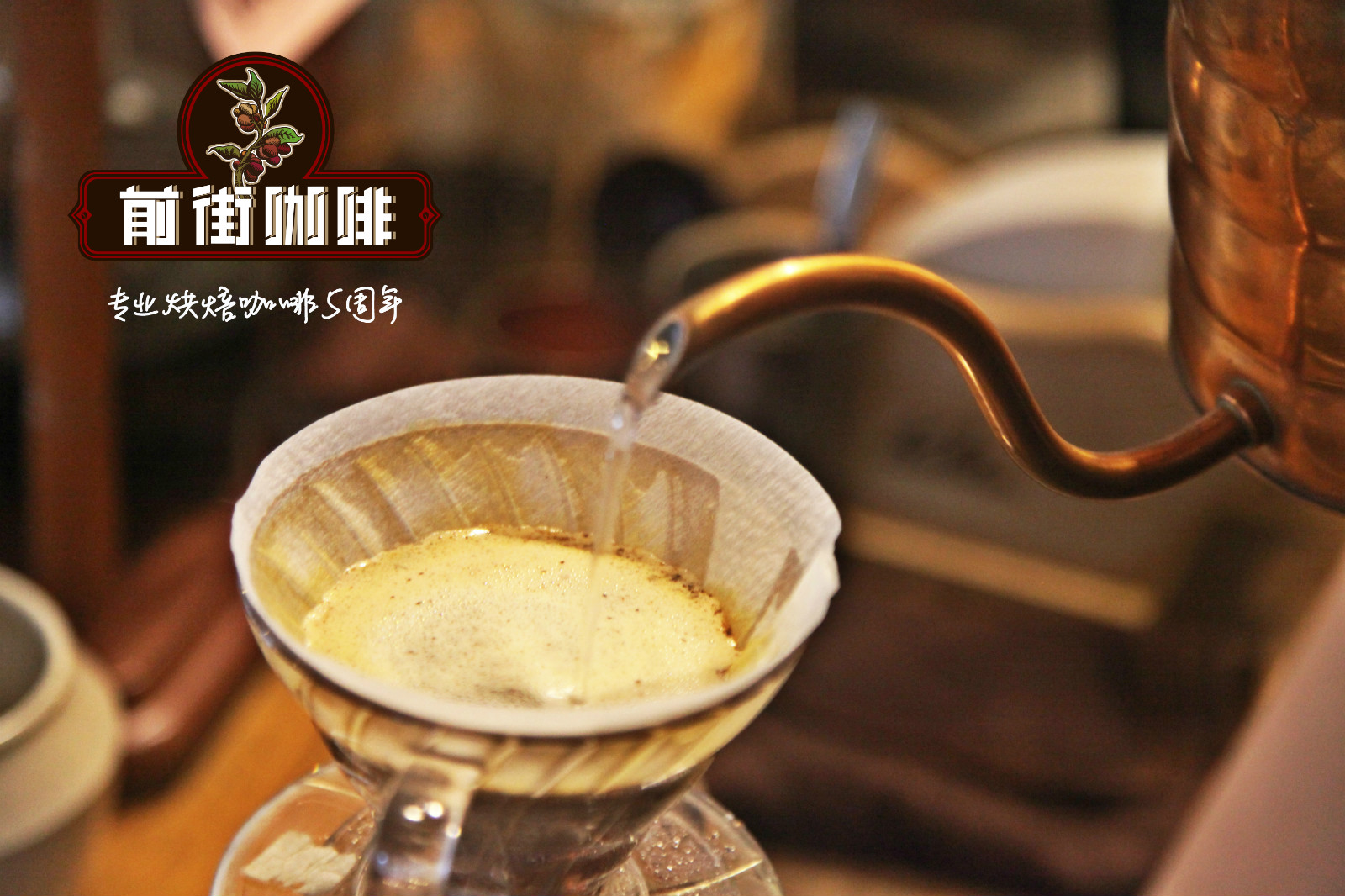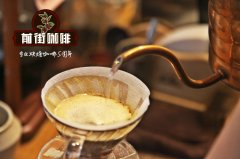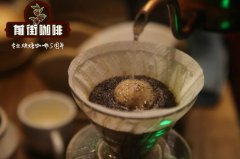La Lajas Manor has passed the Japanese JAS, American USDA and NOP organic certification.

Professional coffee knowledge exchange more coffee bean information please follow the coffee workshop (Wechat official account cafe_style)
Lajas is also the first manor in Central America to start honey treatment and natural sun treatment. Tanning is a very traditional practice, which uses the least resources, but because there are too many uncontrollable factors, it is very difficult to do well. Francesca has added many innovations, such as using the sugar meter (Brix meter), which is often equipped in the wine industry, to measure the sugar content of the fruit, and to determine the best time and treatment of harvest according to the sugar content of Brix. Only those with more than 20% sweetness will be exposed to the sun. The Brix value of general fruit is 14 for apple, 12 for lemon and 18 for passion fruit, but the coffee cherry in Lajas can reach 21 Murray 22%. LaHaas not only does the sun, honey treatment, but also has water to wash beans. The beans grown on the farm are Caturra, Catuai and Villa Sarchi, as well as a small number of Kenyan species such as SL28, Obata and so on.
The natural treatment process of French Sika is quite laborious. Hand-harvested high-sugar cherries are first placed in an African viaduct in the sun for about 10 days, and then placed in a plastic cloth-covered greenhouse to create more direct heat and continue to dry. until the water content reaches 11.5%. The slow drying process allows raw beans to develop more natural sweetness from within, but it also needs more careful care and precise calculation of the number of turns. In the end, in the red coffee processed in La La Haas, the owner of the manor divided the honey-treated and sunburned coffee into many different items according to the expression of flavor. Costa Rican farmers mostly use the peel machine at the washing station to control the amount of residual flesh, but La Lajas decided to do it in a different way. In other words, the highest percentage of the pulp is retained but the exposure and turning time on the African scaffolding is controlled to show different coffee flavors. in the honey treatment, the manor divides the coffee into yellow honey, red honey and black honey.
■ yellow honey treatment:
After removing the pericarp, the peel was placed on the African scaffolding in the early morning and turned immediately.
■ red honey treatment:
After removing the pericarp, it was placed on the African scaffolding in the early morning and exposed to the sun until after noon.
■ black honey treatment:
After removing the pericarp, it was placed on the African scaffolding in the early morning and exposed to the sun until after the afternoon.
■ yellow diamond
After removing the pericarp, open the raw beans with pulp and place them on the concrete soil for exposure, and cover with black plastic cloth for shade and rest one day.
The rule of sun treatment produces a lot of more detailed flavor expression by shading with plastic cloth.
■ Black Pearl:
The harvested red coffee fruits are placed on the African scaffolding in the early morning and regularly turned and exposed to the sun until the moisture content is 11.5%. The whole process takes about two weeks.
■ Black Soul:
The harvested red coffee fruits are placed on the African scaffolding in the early morning, and the whole process takes about three weeks to turn and expose regularly for one day and rest with plastic cloth until the moisture content is 11.5%.
At the same time, in the manor fertilization materials, the manor owner strictly requires that all processes should be planted and fertilized in accordance with organic standards, and the whole manor uses organic self-made compost. At the same time, the organic standard is extended to include soil quality, shade trees and washing plant procedures. After years of efforts, Ras Lajas Manor has passed the Japanese JAS, American USDA and NOP organic certification. The cherries turn black, giving off the aromas of fruitcake, black sugar and even sherry, and you're done.
In the coffee processed by La Lajas, the owner of the manor divides the honey-treated and sunburned coffee into different items according to the flavor. Costa Rican farmers mostly use the peel machine at the washing station to control the amount of residual flesh, but La Lajas decided to do it in a different way. In other words, the highest percentage of the pulp is retained but the exposure and turning time on the African scaffolding is controlled to show different coffee flavors. in the honey treatment, the manor divides the coffee into yellow honey, red honey and black honey.
However, the focus of honey treatment is not sweetness, but plumpness!
The black pearl is dried whole coffee cherries for two weeks to increase the aroma and richness of tropical fruits.
The black soul is the whole coffee cherry dried for three weeks, adding a thick fruit feel and cream chocolate throat rhyme.
END
Important Notice :
前街咖啡 FrontStreet Coffee has moved to new addredd:
FrontStreet Coffee Address: 315,Donghua East Road,GuangZhou
Tel:020 38364473
- Prev

La Lajas Manor has passed the Japanese JAS, American USDA and NOP organic certification.
Professional coffee knowledge exchange more coffee bean information please pay attention to the coffee workshop (Wechat official account cafe_style) Lajas is also the first manor in Central America to start honey treatment and natural sun treatment. Tanning is a very traditional practice, which uses the least resources, but because there are too many uncontrollable factors, it is very difficult to do well. Francesca has added a lot of innovation.
- Next

What are the flavor characteristics of coffee in Vera, Colombia? how is Colombian coffee graded?
Professional coffee knowledge exchange more coffee bean information please follow the coffee workshop (Wechat official account cafe_style) Colombia's three Codiera mountains run north-south, extending into the Andes, local coffee farmers grow coffee along the highlands of these mountains, with diverse climate production conditions; but also because of changes in topography and altitude, Colombia's coffee industry
Related
- Does Rose Summer choose Blue, Green or Red? Detailed explanation of Rose Summer Coffee plots and Classification in Panamanian Jade Manor
- What is the difference between the origin, producing area, processing plant, cooperative and manor of coffee beans?
- How fine does the espresso powder fit? how to grind the espresso?
- Sca coffee roasting degree color card coffee roasting degree 8 roasting color values what do you mean?
- The practice of lattes: how to make lattes at home
- Introduction to Indonesian Fine Coffee beans-- Java Coffee producing area of Indonesian Arabica Coffee
- How much will the flavor of light and medium roasted rose summer be expressed? What baking level is rose summer suitable for?
- Introduction to the characteristics of washing, sun-drying or wet-planing coffee commonly used in Mantenin, Indonesia
- Price characteristics of Arabica Coffee Bean Starbucks introduction to Manning Coffee Bean Taste producing area Variety Manor
- What is the authentic Yega flavor? What are the flavor characteristics of the really excellent Yejasuffi coffee beans?

